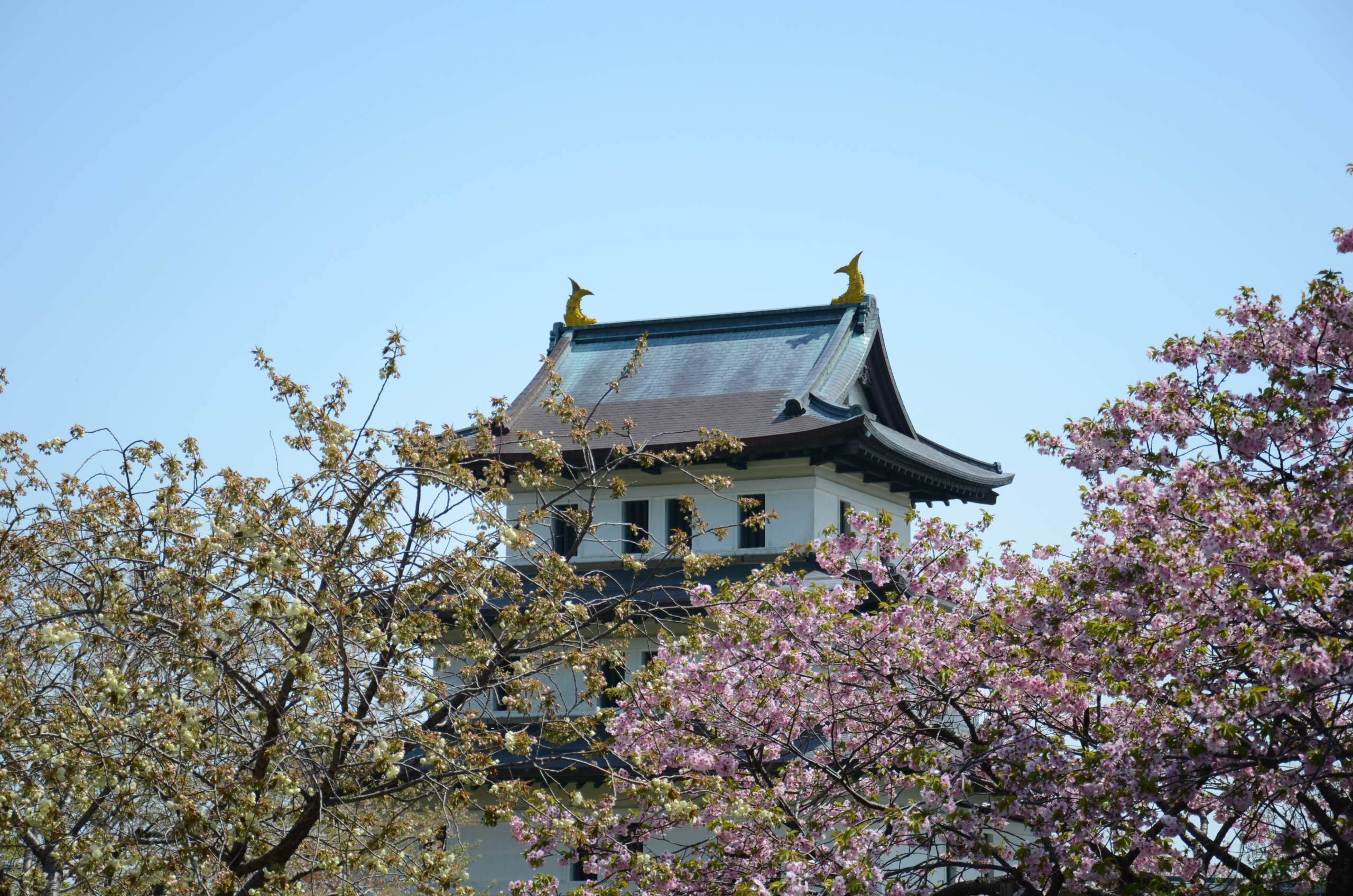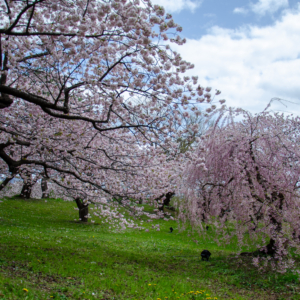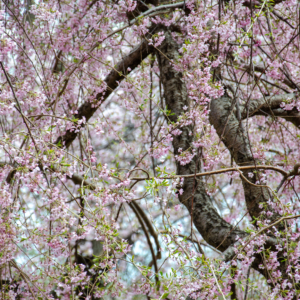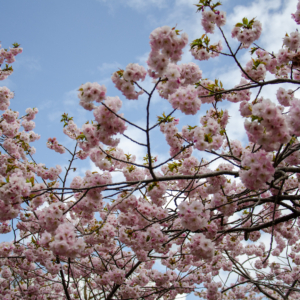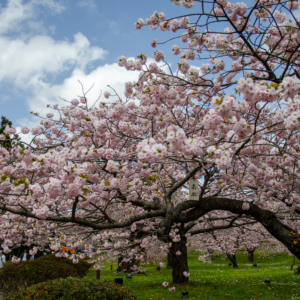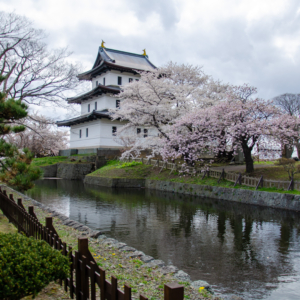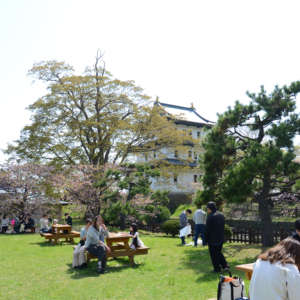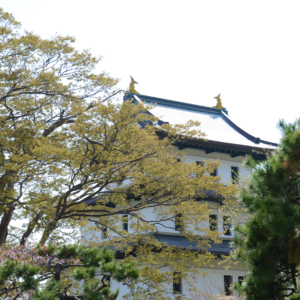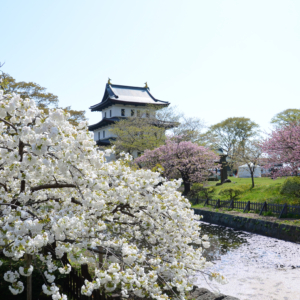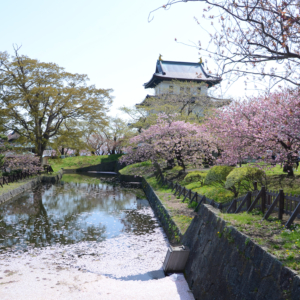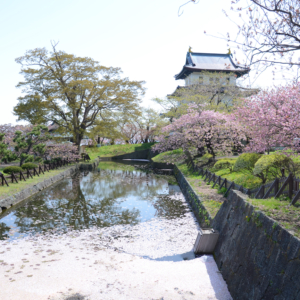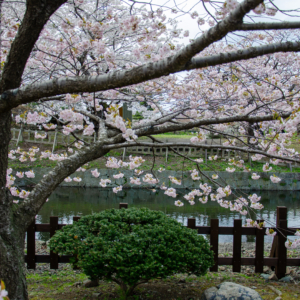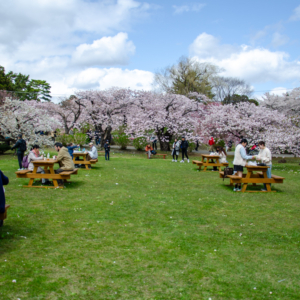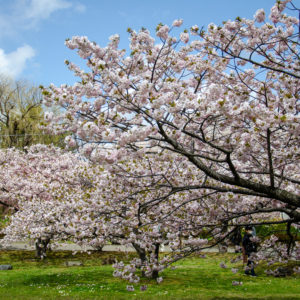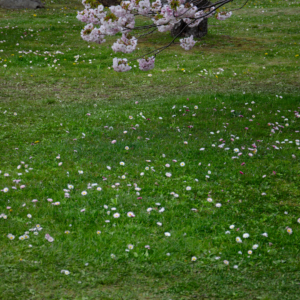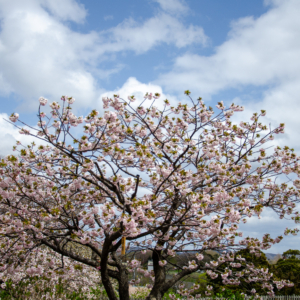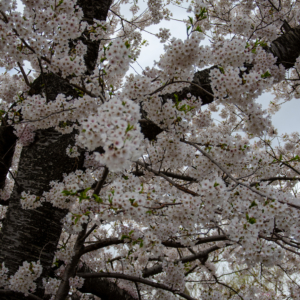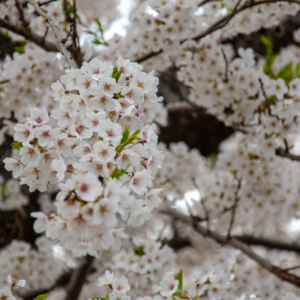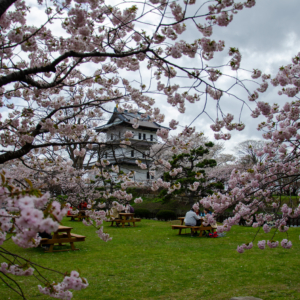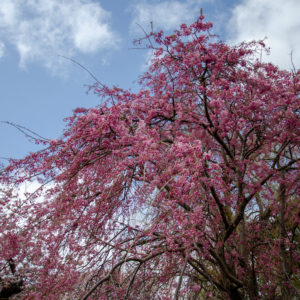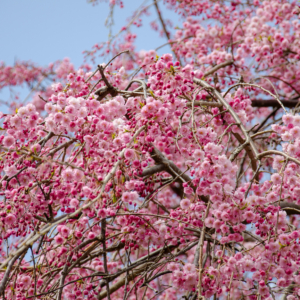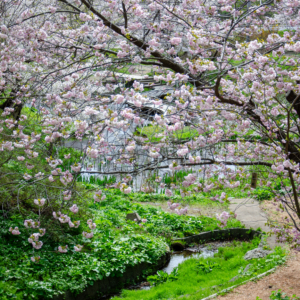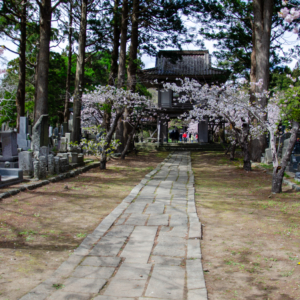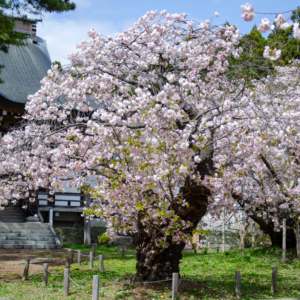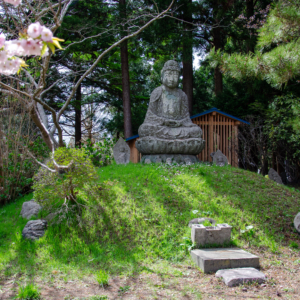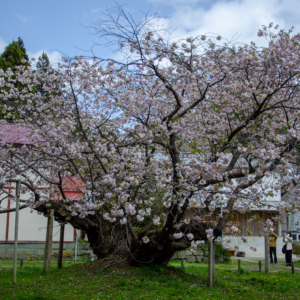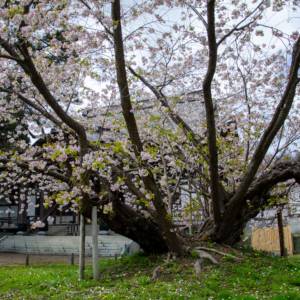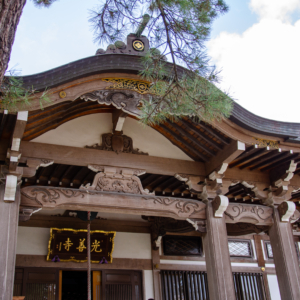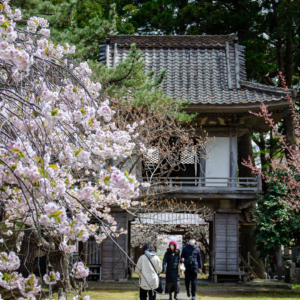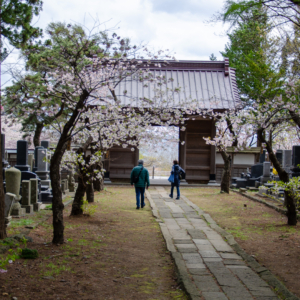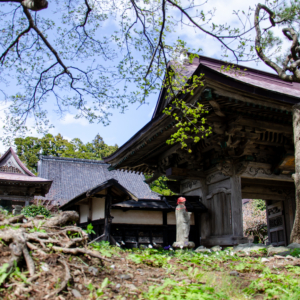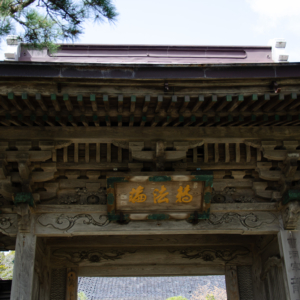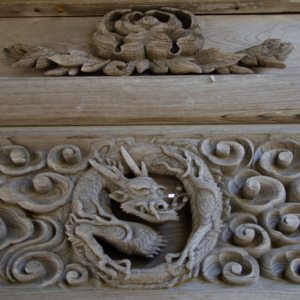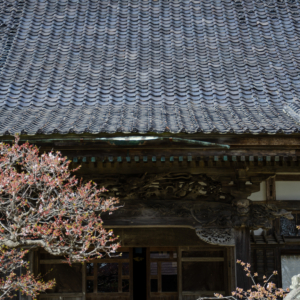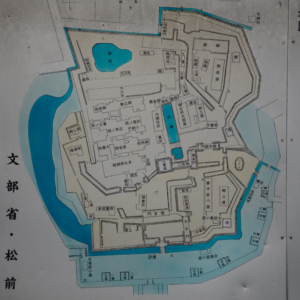It’s said that there are around 10,000 cherry blossom trees of approximately 250 varieties in Matsumae-jo park.
Here in Matsumae town, Early-blooming cherry blossoms start to bloom around mid-April, and various types of cherry blossoms continue to bloom one after another for about a month. The cherry blossoms bloom all at once and reach full bloom, usually lasting about a week before the peak period passes. However, Matsumae’s cherry blossoms can be enjoyed longer than anywhere else in Japan.
You should see Matsumae’s cherry blossoms at least once in your lifetime.
These cherry blossoms have been cherished and protected by the townspeople for generations. The beauty of these cherry blossoms embodies the history of Matsumae.
Of course, visiting Matsumae at any season is wonderful, but if you have the chance, it’s best to visit Matsumae in mid-April when the cherry blossoms are in full bloom.
It’s no exaggeration to say that Matsumae is one of Japan’s premier cherry blossom spots. Once you see the cherry blossoms here before they bloom, you’ll know I’m telling the truth without a doubt.
What makes the cherry blossoms here so special?
It’s because of the castle.
Though it’s a small castle with a modest keep, the collaboration between this castle and the cherry blossoms captivates visitors. Furthermore, there are temples surrounding the castle that have continued since the Edo period, all designated as important cultural properties by the country.
Cherry trees are also planted in rows around these temples and in their courtyards, making it enjoyable to take a stroll.
After visiting Matsumaejo, why not head to Kozen-ji Temple (光善寺)? Kozen-ji is home to the famous cherry tree known as ‘Kechimyaku Sakura’ (血脈桜).
This ancient sakura tree is the oldest in Matsumae, and many of the cherry trees in the area are descendants of the Kechimyaku Sakura at Kozen-ji.
About Kozenji temple
Established in 1533 (Tembun 2), this temple belongs to the Jodo sect, and it is said to have received its “sango”-which is a title prefixed to the name of a Buddhist temple- and ceremonial robes from Emperor Go-Mizunoo.
In the years of Bunka 5 (1808), Tenpo 8 (1837), and Meiji 36 (1903), the temple suffered from three separate fires, causing most of its structures to be lost. However, the surviving Niomon Gate was constructed in Hoei 9 (1759), and the Bell Tower Gate was built in Koka 4 (1847). Serving as the family temple for the Matsumae clan’s women, it played a central role as a quasi-parish temple and central temple in the Jodo sect in Ezo (Hokkaido).
After Kozenji, you may visit Ryuun-in temple
Kayuzan Ryuun-in Temple was founded in the second year of Kan’ei (1625) at the behest of Katsuko, the lawful wife of the 7th lord of the Matsumae domain, Kimihiro. It was established adjacent to Houdou-ji Temple, the family temple of the Matsumae clan, with Ryōten, a monk from Houdou-ji, serving as its founding priest.
The main gate is situated on the southern face of the temple complex, and beyond it lies the main hall. To the east of the main hall is the kitchen, and to the west is the Ryujindou (a designated sub-temple) where the Dragon God, guardian of maritime safety, is enshrined. The bell tower stands to the southwest of the main hall, while a storehouse occupies the southeastern corner of the precincts.
Both the main hall and the kitchen were constructed in the 13th year of Tenpō (1842), with the main hall built by craftsmen from Hokuetsu Miyakawa (present-day Miyakawa, Kashiwazaki City), and the kitchen by local craftsmen from Matsumae. The bell tower is estimated to have been built in the 3rd year of Kōka (1846), and the storehouse by the same year. The main gate was erected in the 4th year of Kaei (1851). The Dragon God Hall was initially constructed in the 13th year of Bunsei (1830) but was damaged during the Hakodate War. It was rebuilt in the 6th year of Meiji (1873).
During the Edo period, the area around the temples behind Fukuyama Castle was home to over 15 temples and shrines, including the Hachiman Shrine and Hōtō-ji. However, many were lost due to the fires of the Hakodate War, subsequent fires, and the exodus from Matsumae. Thus, few remnants of the former temple complex remain today.
Hokkaido Heritage “Matsumae Castle and The Temple Town called Teramachi”
Matsumae Town, which flourished as the northernmost castle town during the Edo period, still retains numerous historical sites, including Matsumae Castle. Matsumae Castle, built in the late Edo period, and the Teramachi area to its north, were selected as Hokkaido Heritage sites in 2004 under the designation “Fukuyama Castle (Matsumae Castle) and Teramachi.” These sites serve as cultural assets that tell the history of Hokkaido before the Meiji era.
